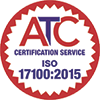There is little doubt that technology has brought about marked changes to the translation industry. Many people want to know will translators be needed in the future. The obvious ones are Google and Skype translate. They both have useful but not entirely perfect translation programs but they have still made significant headways into perfecting language translation with less than a usual human input. These would only be a pipedream a couple of decades ago. In addition to the above technology which has eased the burden for translators are Computer-Aided Translation (CAT) tools, translation memory, instant communication, and glossaries.
What now lies ahead according to professional forecasters is a mixture of intelligent devices coupled with experts in different subject matter fields who will work alongside one another to deliver accurate translations at competitive prices. One thing that is for sure physical frontiers is no longer a bar to communication. This means any type of business, small or big can enter global markets as long as they have selected high-quality business translators to do their translation work. By the time 2020 comes to a close $45 billion will have passed through different hands as more and more businesses see the usefulness of going global and for this, business needs the translator. For sure the translation industry will grow. This price tag won’t be focusing on paying for simple word-for-word translations as they are no longer considered effective for the global market.
Translators and their companies will be promoting higher-end localization as the preferred route for companies wishing to go global and be competitive. It isn’t too difficult to transit language barriers but to do this with some true effect brands need to consider the cultural differences of their intended market. They cannot necessarily use the same brand terminology like color and symbols that have been effective to gain customers in their native language. They may even have to change the brand name completely if the wording of the brand translated from English into another language is not appropriate and might even cause offense leading to an instant boycott of the brand.
Offering competitive prices is key to a successful translation business
Lots of translation businesses are entering the lucrative translation market so it will be necessary to offer competitive pricing to stay in the market. This also means the translators will need to turn over more translation projects to stay in the market. This really means translators cannot ignore the benefits of integrating CAT tools into their everyday translation tasks. There is no way a purely human translator can ever compete effectively with those translators who have taken it upon themselves to embrace every type of technology to speed up the translation process but provide high-quality translations.
The new standard is an automated translation
This doesn’t just mean the translations themselves but the managing of a workflow as well. Quickly downloading translation requirements and uploading finished translations is one of the moves towards translation efficiency. There is more efficient translation software that speedily converts an assortment of different file types as well as the CAT technology that reduces the time required for completing the translation process. By integrating a better content management system, decreases turnaround times.
In summary, the following will be increasingly part of the translation process at the beginning of this new decade:
- a translation memory which includes data to do with terminology as well as technical vocabulary;
- simpler access to any prior work and many resources available to gather information;
- multilingual SEO, allowing the integration of local keywords into translated content;
- tracking tools monitoring workflow;
- these tools limit the need for emails and manual file transfers. This reduces the time devoted to repetitive jobs and there is less room for mistakes to be made;
- proofreading tools are expected to be much simpler to use creating an increase in accuracy and decreasing the time required to check each translation;
- artificial intelligence will be used widely by translators.
Google has made marked improvements in its first translation software and uses more artificial intelligence than ever before. This breakthrough will be used by all players in the translation industry from the company clients down to the human translator. Machine translation isn’t yet perfect, as it cannot yet take on all 7,000 languages and dialects, but artificial intelligence and deep learning are expected to create new lines of the translation software. It will be able to integrate more cultures as more and more people use the internet more frequently. IT specialists won’t be in such high demand as new software will be self-explanatory.
Finally, the future of translation lies in the cloud, as in reality SaaS and another web integrated technology are the most effective methods of keeping the client’s information secure. So easy to access as there is no need to download documents directly onto a personal computer which so often causes security risks. Embracing changes is part of the world today so translation businesses have to be quick to stay ahead of competitors and tap into the lucrative translation market.


















